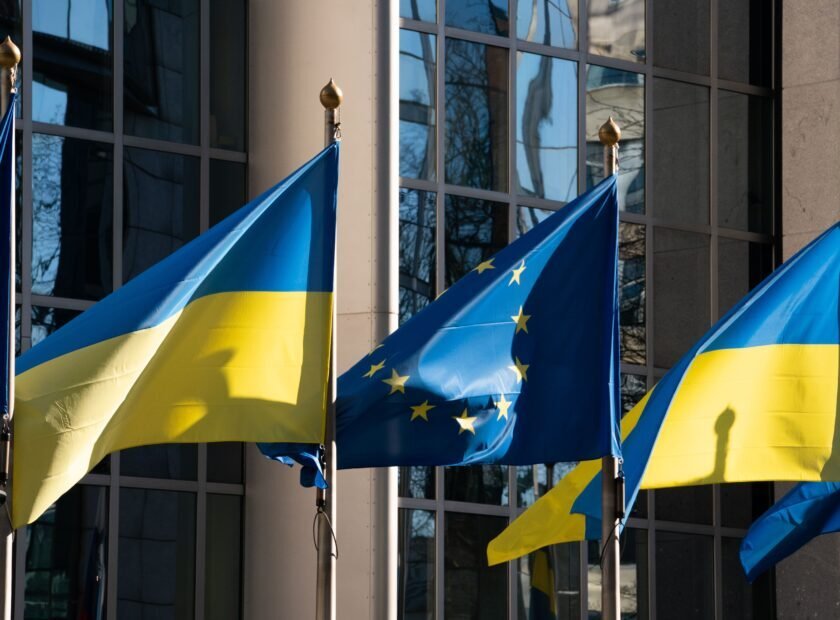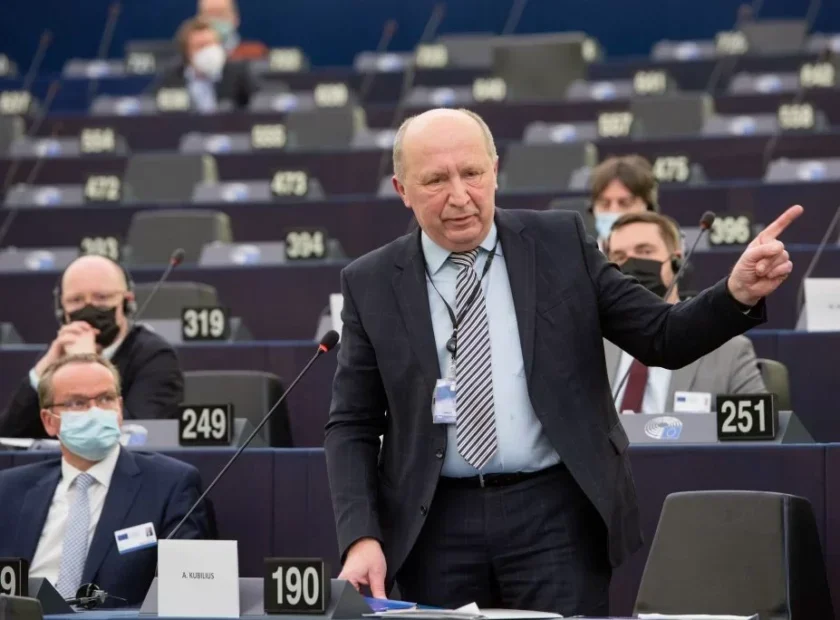On the Reality of War

We all know that this year Ukraine is finding it harder to liberate its occupied territories than last year. Increasingly, there are warnings (from the Ukrainian General V.Zaluzhnyi to the Lithuanian Foreign Minister Gabrielius Landsbergis) that the war could become a war of entrenchment, which only benefits Russia. On this occasion, there are attempts in various corners of the West to persuade that the only way to avoid the stagnation of trench warfare is to negotiate peace with Russia on Putin’s terms.
Many in the World are worried by such facts that the US Congress is unable to approve a new package of financial support for Ukraine. In addition, the US presidential elections are approaching, where D.Trump may win. It is impossible to predict the impact of this on the further course of the war. And then there is Hungary, which also makes the EU’s decision-making on support for Ukraine unpredictable.
It is against this backdrop that it is worth looking for fundamental answers as to why the frontline in Ukraine is stagnating, even though the West proclaims that it has provided Ukraine with a lot of military support, which should be sufficient to achieve victory. Even the F-16s are about to arrive.
Increasingly, one can hear hints in the West that the West is “tired” or is “about to be tired” of supporting Ukraine because the frontline is stalled. North Korea is capable of finding a million artillery shells for Russia in a month, but the European Union cannot do it in a year. Meanwhile, General Zaluzhnyi is not asking the West for tanks or artillery (which the West has supplied for as long as it has them in its warehouses, because Western military industry is still unable to increase production), but for drones, electronic anti-drones or radars, which the Ukrainians could produce themselves if they were given the funding.
The fundamental question thus arises: why is it that the West, while supporting Ukraine, has not been able to achieve a fundamental breakthrough in Ukraine’s war of liberation against Russia? After all, the West is economically tens of times stronger than Russia, and as history tells us, wars are always won in the end by stronger economies. This has always been the case. Why are we still not seeing that this time?
To understand the essence of the problem, we need to look in some detail at the “war finance” situation of Russia, Ukraine and the West. Accounting is not only important for the state budget, but also for military affairs.
So here are some important figures.
First of all, on the economic potential of Russia and the West: in 2022, Russia’s GDP was USD 1,8 trillion. The European Union’s GDP was USD 18,35 trillion and the USA’s USD 26,23 trillion. So, the EU alone has 10 times the economic potential of Russia, and if you add up the EU and US figures, the gap between the major Western powers and Russia is up to 25 times.
The West is 25 times economically stronger than Russia! According to the simple historical and economic logic of the wars, Russia should have been crushed in Ukraine long ago. But, as we can see, this is not yet the case. Why?
Therefore, it is worth taking a closer look at the bookkeeping of “war finance”: how much money does Russia, Ukraine and the West contribute to the financing of the war?
When looking at the Russian data, it is noticeable that the figures published in various expert publications or in the World Bank statistics vary quite significantly, because since the beginning of the war the Russian authorities have classified the financial statistics. Thus, the World Bank announces that in 2022 Russia will have spent USD 86 billion on military expenditure, while experts at Sweden’s SIPRI Institute put the figure at USD 61 billion. The Wilson Center puts the figure at USD 81,7 billion. The figures for 2023 vary even more: between 80 billion USD (SIPRI) and 120 billion USD (Wilson Center) for 2023. The Wilson Center also states that Russia’s “war costs” do not include all the costs of the war, as they exclude the treatment of the wounded and many other costs (which, if included, would bring Russia’s costs in 2023 up to USD 160 billion). It is also worth noting that the Russian government announces that it will increase military spending by as much as 70% in 2024.
Although the figures published by experts on Russia’s military spending vary, in summary, it can be said that in 2022, such spending would amount to around USD 80 billion, and in 2023 it may reach around USD 100 billion. This could rise even further in 2024.
Calculating the ratio of Russia’s military spending to GDP, we find that it was around 4% in 2022, over 5% in 2023 and will exceed 6% in 2024.
Russia is able to finance such military spending because it earns around USD 7,4 billion a month from oil and gas exports alone. This means that Russia can earn around USD 90 billion a year from oil and gas.
Ukraine plans to spend almost unchanged amounts of money on war financing in both 2023 and 2024 – around UAH 1,7 trillion, or around USD 44 billion.
Such war spending represents as much as 26,6% of Ukraine’s GDP, resulting in the deficit of the Ukrainian budget of USD 38 billion, or 27% of GDP. Therefore, Ukraine needs not only Western military support, but also support to cover the budget gap. Ukraine is also planning to spend USD 1,25 billion on the acquisition of drones in 2024.
The European Union has provided Ukraine with USD 29 billion in military aid since the start of the war. This is the support that the EU has provided for Ukraine’s military needs, both from its own budget (EUR 6 billion) and from all EU Member States combined, i.e. all the support provided to Ukraine by Germany, Lithuania, Poland and all other EU Member States.
However, this amount represents only 0,15% of the European Union’s gross domestic product!!! In 2 years, only 0,15%! In one year, it comes out to 2 times less – USD 14.5 billion or 0,075% of EU GDP.
The NATO standard for defence is 2% of GDP. The EU says that it will “stand together with Ukraine for as long as it takes” and that the Ukrainian war is also “our” war, but it spends only 0,075% on this “our” war.
Ukraine will spend 26% of its GDP on this war in 2023, Russia 6% and the EU only 0,075%. A staggering difference!!!
Of course, there are countries such as Lithuania (leading), Estonia, Latvia or Poland, which have already allocated 1% or even more of their GDP to military aid, but the overall level of EU military aid to Ukraine looks dismal – 0,075%.
Of course, the European Union is providing a lot of money for Ukraine’s macro-financial support, or in other words, for the financing of other expenses in the Ukrainian budget, but this does not change the fact that the only way to win a war is to finance a military victory. Wars are not won by political declarations of solidarity alone.
United States military aid to Ukraine has reached USD 42,10 billion in 2 years. Not much better than the EU support. In one year of war, US support amounts to only USD 21 billion or 0.10% of GDP.
Once the individual figures are broken down, the overall picture of the war’s “bookkeeping” can be seen, which reveals the main reason for the stalemate in this war on the Eastern Front.
As has already been shown, Russia’s military expenditure in 2023 is estimated at USD 100 billion. Maybe more.
Ukraine’s military spending is USD 44 billion. The European Union adds USD 14,5 billion to this, and the US another USD 21 billion. To this could be added the figures for British or Norwegian aid (not included in the EU statistics), but these do not change the substance.
So, the total amount of funds Ukraine, the EU and the US have allocated in 2023 to militarily counter Russian aggression is only USD 79,5 billion. This is less than the USD 100 billion allocated by Russia for the same purpose this year.
One can remember that the US and the EU are 25 times more economically powerful than Russia. But Russia is spending 6% of its GDP on this war, while the EU and the US are spending only 0,075% and 0,10% respectively. That is to say, Russia is devoting 60-80 times more of its economy to this war than the US or the EU.
I stress, 60-80 times more!
This is why the war is stalling in the trenches: because Russia is clearly winning against the West on the front of its economic mobilisation for war.
This overall picture of the financial “bookkeeping” of the war also makes clear what is needed to avoid a disastrous trench war on the Eastern military front: this requires victory on the political front in the West. And this is one of the most important geopolitical tasks for Lithuania. Lithuania must not only worry about its own bilateral support for Ukraine, but also about how to build a coalition of like-minded and like-supporting countries (the Baltic States, Poland, Scandinavia, the UK) and how to persuade the rest of the West to follow our example.
I can say again and again what I have said many times before: It is important for Lithuania today to take care and fight on the Western front to ensure that Russia is defeated at Kherson and Kharkiv, and not just to accept the current situation of “trench warfare” in Ukraine, and to think now only about how we will defend Vilnius when Putin comes to us after victory in Ukraine.
Russia will lose in Ukraine if we win in the West. That is the alpha and omega of our defence and security strategy. This requires that we stop just watching military developments in
Ukraine like the self-righteous actors or neutral experts, we need to start to “fight” in the European Council in Brussels and Washington and in other Western outposts for real and much larger investment into Ukraine’s defense, in order to guarantee that Ukrainian military efforts are financed 2 or 3 times more than Russia is able to finance it’s own. I have not heard anything so far about such fights for such purposes on the Western front and about building coalitions for our victories on that front.
We will be talking about the new battles ahead on the Western Front and Ukraine’s future victories at a high-level conference in the European Parliament organised by the U4U (United for Ukraine) coalition this coming Tuesday, 28 November. We started the U4U coalition on the first day of the war in order to win the battles on the Western Front. Because only then will Ukraine finally win.
And we will achieve it!




